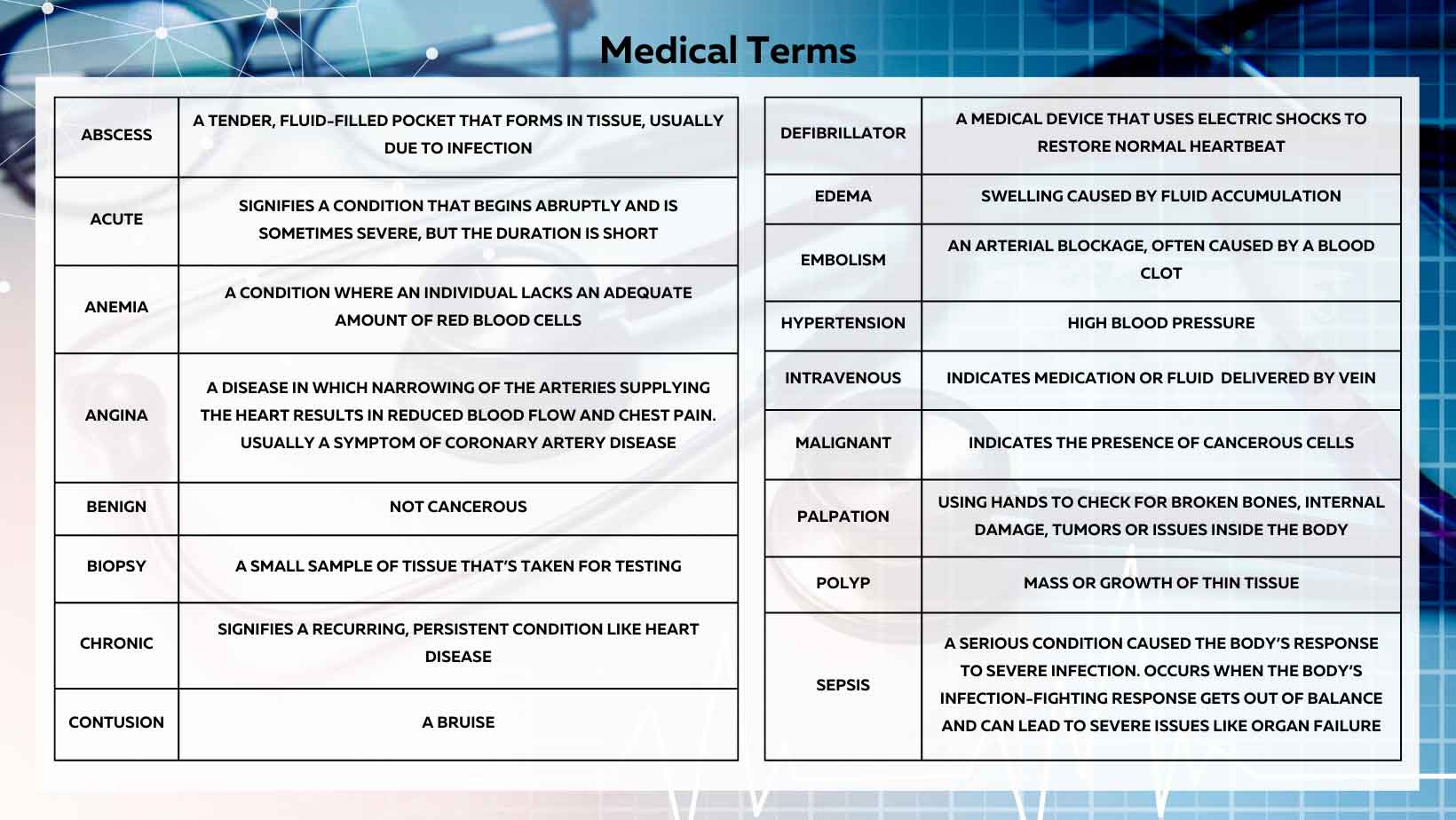Men's Health
Blood Test Panels
12 of the most common blood tests med are required to have.
A complete cholesterol test — also called a lipid panel or lipid profile — is a blood test that can measure the amount of cholesterol and triglycerides in your blood.
- A cholesterol test can help determine your risk of the buildup of fatty deposits (plaques) in your arteries that can lead to narrowed or blocked arteries throughout your body (atherosclerosis).
- A cholesterol test is an important tool. High cholesterol levels often are a significant risk factor for coronary artery disease.
- High cholesterol usually causes no signs or symptoms. A complete cholesterol test is done to determine whether your cholesterol is high and to estimate your risk of heart attacks and other forms of heart disease and diseases of the blood vessels.
A complete cholesterol test includes the calculation of four types of fats in your blood:
- Total cholesterol. This is a sum of your blood's cholesterol content.
- Low-density lipoprotein (LDL) cholesterol. This is called the "bad" cholesterol. Too much of it in your blood causes the buildup of fatty deposits (plaques) in your arteries (atherosclerosis), which reduces blood flow. These plaques sometimes rupture and can lead to a heart attack or stroke.
- High-density lipoprotein (HDL) cholesterol. This is called the "good" cholesterol because it helps carry away LDL cholesterol, thus keeping arteries open and your blood flowing more freely.
- Triglycerides. Triglycerides are a type of fat in the blood. When you eat, your body converts calories it doesn't need into triglycerides, which are stored in fat cells. High triglyceride levels are associated with several factors, including being overweight, eating too many sweets or drinking too much alcohol, smoking, being sedentary, or having diabetes with elevated blood sugar levels.
The PSA test is a blood test used primarily to screen for prostate cancer.
- The test measures the amount of prostate-specific antigen (PSA) in your blood. PSA is a protein produced by both cancerous and noncancerous tissue in the prostate, a small gland that sits below the bladder in males.
- PSA is mostly found in semen, which also is produced in the prostate. Small amounts of PSA ordinarily circulate in the blood.
- The PSA test can detect high levels of PSA that may indicate the presence of prostate cancer. However, many other conditions, such as an enlarged or inflamed prostate, also can increase PSA levels. Therefore, determining what a high PSA score means can be complicated.
- There is a lot of conflicting advice about PSA testing. To decide whether to have a PSA test, discuss the issue with your doctor, considering your risk factors and weighing your personal preferences.
- Prostate cancer is common, and it is a frequent cause of cancer death. Early detection may be an important tool in getting appropriate and timely treatment.
- Prostate cancer can cause elevated levels of PSA. However, many noncancerous conditions also can increase the PSA level. The PSA test can detect high levels of PSA in the blood but doesn't provide precise diagnostic information about the condition of the prostate.
- There is a lot of conflicting advice about PSA testing. To decide whether to have a PSA test, discuss the issue with your doctor, considering your risk factors and weighing your personal preferences.
- The PSA test is only one tool used to screen for early signs of prostate cancer. Another common screening test, usually done in addition to a PSA test, is a digital rectal exam.
- In this test, your doctor inserts a lubricated, gloved finger into your rectum to reach the prostate. By feeling or pressing on the prostate, the doctor may be able to judge whether it has abnormal lumps or hard areas.
- Neither the PSA test nor the digital rectal exam provides enough information for your doctor to diagnose prostate cancer. Abnormal results in these tests may lead your doctor to recommend a prostate biopsy.
- During a prostate biopsy, samples of prostate tissue are removed for laboratory examination. A diagnosis of cancer is based on the biopsy results.
This is a blood test that shows what your average blood sugar (glucose) level was over the past two to three months.
- Glucose is a type of sugar in your blood that comes from the foods you eat. Your cells use glucose for energy. A hormone called insulin helps glucose get into your cells. If you have diabetes your body doesn't make enough insulin, or your cells don't use it well. As a result, glucose can't get into your cells, so your blood sugar levels increase.
- Glucose in your blood sticks to hemoglobin, a protein in your red blood cells. As your blood glucose levels increase, more of your hemoglobin will be coated with glucose. An A1C test measures the percentage of your red blood cells that have glucose-coated hemoglobin.
An A1C test can show your average glucose level for the past three months because:
- Glucose sticks to hemoglobin for as long as the red blood cells are alive.
- Red blood cells live about three months.
- High A1C levels are a sign of high blood glucose from diabetes. Diabetes can cause serious health problems, including heart disease, kidney disease, and nerve damage. But with treatment and lifestyle changes, you can control your blood glucose levels.
A TSH test is a blood test that measures this hormone. TSH levels that are too high or too low may be a sign of a thyroid problem.
- The thyroid is a small, butterfly-shaped gland in the front of your neck. Your thyroid makes hormones that control how your body uses energy. Thyroid hormones affect nearly every organ in your body, including your heart. They help control your weight, body temperature, muscle strength, and even your mood. If you don't have enough thyroid hormones in your blood, many of your body functions slow down. If you have too much, many body functions speed up.
- Your thyroid is controlled by a gland in your brain, called the pituitary gland. The pituitary gland makes thyroid stimulating hormone (TSH). TSH tells your thyroid how much thyroid hormone it needs to make.
- If the thyroid hormone levels in your blood are too low, your pituitary gland makes larger amounts of TSH to tell your thyroid to work harder. If your thyroid hormone levels are too high, the pituitary gland makes little or no TSH. By measuring TSH levels in your blood, you can find out if your thyroid is making the right level of hormones.
A TSH test is used to find out how well your thyroid is working. It can tell if you have hyperthyroidism (too much thyroid hormone) or hypothyroidism (too little thyroid hormone) in your blood. But a TSH test can't show what is causing a thyroid problem.
Homocysteine is a chemical that exists in small amounts in your blood.
- A homocysteine test is a blood test that measures the amount of an amino acid called homocysteine in your body.
- Vitamins B6, B9 and B12 help break down homocysteine, changing it into other substances your body needs. This process should leave behind very small levels of homocysteine in your blood.
- But if the process isn’t working properly, your level of homocysteine may be high. Homocysteine can build up in your blood arteries, increasing your risk of cardiovascular disease, specifically:
- Blood clots
- Coronary artery disease
- Hardened arteries (atherosclerosis)
- Heart attack (myocardial infarction)
- Peripheral vascular disease
- Stroke
A protein that helps with blood clotting.
- A fibrinogen test is a blood test to check your fibrinogen levels.
- If you have low fibrinogen, you may have intravenous (IV) treatments to increase your levels.
Your healthcare provider may order this test if you experience excessive bleeding.
A protein made by the liver.
- The level of CRP increases when there's inflammation in the body. A simple blood test can check your C-reactive protein level.
- A high-sensitivity C-reactive protein (hs-CRP) test is more sensitive than a standard C-reactive protein test. That means the high-sensitivity test can find smaller increases in C-reactive protein than a standard test can.
- The hs-CRP test can help show the risk of getting coronary artery disease. In coronary artery disease, the arteries of the heart narrow. Narrowed arteries can lead to a heart attack.
- A high-sensitivity C-reactive protein (hs-CRP) test is more sensitive than a standard C-reactive protein test. That means the high-sensitivity test can find smaller increases in C-reactive protein than a standard test can.
Your health care provider might order a C-reactive protein test to:
- The primary reproductive hormone in nonpregnant women.
- This steroid hormone plays an important role in normal fetal development and in the development of secondary sexual characteristics in females.
- Estradiol influences the maturation and maintenance of the uterus during the normal menstrual cycle.
- Levels of estradiol steadily increase during the follicular phase of the menstrual cycle in association with the growth and development of the ovarian follicle.
- As the follicular phase proceeds, estradiol exerts a negative feedback control on the pituitary, resulting in a drop in FSH levels.
- Near the end of the follicular phase, there is a dramatic increase in estradiol levels.
- At this point, the feedback of estradiol on the hypothalamus becomes positive and produces the midcycle surge of LH which immediately precedes ovulation.
- After ovulation, estradiol levels initially fall abruptly, but then increase as the corpus luteum forms.
- At the end of the cycle, levels fall off in anticipation of the initiation of the next follicular phase.
- During pregnancy, the placenta produces estradiol.
- Estradiol levels are generally low in menopause due to diminished ovarian production.
- A small amount of Estradiol is produced by the male testes.
- Elevated levels in males can lead to gynecomastia.
- Increased estradiol levels in males may be caused by increased body fat, resulting in enhanced peripheral aromatization of androgens.
- Levels in men can also be increased by excessive use of marijuana, alcohol, or prescribed drugs, including phenothiazines and spironolactone.
- Estradiol levels can also be dramatically elevated in germ cell tumors and tumors of a number of glands in both men and women.
This test measures the levels of DHEA sulfate (DHEAS) in your blood. DHEAS stands for dehydroepiandrosterone sulfate. DHEAS is a male sex hormone that is found in both men and women. DHEAS plays an important role in making the male sex hormone testosterone and the female sex hormone estrogen. It’s also involved in the development of male sexual characteristics at puberty.
- DHEAS is mostly made in the adrenal glands, two small glands located above your kidneys. They help control heart rate, blood pressure, and other body functions. Smaller amounts of DHEAS are made in a man’s testicles and in a woman’s ovaries. If your DHEAS levels are not normal, it may mean there is a problem with your adrenal glands or sex organs (testicles or ovaries.)
A DHEA sulfate (DHEAS) test is most often used to:
- Find out if your adrenal glands are working right
- Diagnose tumors of the adrenal glands
- Diagnose disorders of the testicles or ovaries
- Find out the cause of early puberty in boys
- Find out the cause of excess body hair growth and development of masculine features in women and girls
A DHEAS test is often done along with other sex hormone tests. These include testosterone tests for men and estrogen tests for women.
It checks the level of testosterone in your blood. Your doctor uses it to diagnose conditions caused by too much or too little testosterone. That’s a hormone produced in a man’s testes.
- During puberty, testosterone builds a man's muscles, deepens their voice, puts hair on their chest, and makes their penis grow. Throughout a man's life, the hormone also helps produce sperm and keep up their sex drive.
- Women make testosterone too, but in smaller amounts. They produce it in their ovaries. It helps maintain hormone balance and regulates other body functions.
The Testosterone Test will measure testosterone, which travels through your blood in two ways:
- Attached to the proteins albumin and sex hormone binding globulin (SHBG)
- Free -- not attached to any proteins
Usually, you'll get a total testosterone test as a screening test. This measures both free and attached testosterone. To diagnose certain conditions, doctors sometimes look only at free testosterone levels
A test that measures 14 different substances in your blood. It provides information about your body's chemical balance and metabolism. Metabolism is the process of how the body uses food and energy.
A CMP includes tests for the following:
- Glucose, a type of sugar and your body's main source of energy.
- Calcium, one of the body's most important minerals. Calcium is essential for proper functioning of your nerves, muscles, and heart.
- Sodium, potassium, carbon dioxide, and chloride. These are electrolytes, electrically charged minerals that help control the amount of fluids and the balance of acids and bases in your body.
- Albumin, a protein made in the liver.
- Total protein, which measures the total amount of protein in the blood.
- ALP (alkaline phosphatase), ALT (alanine transaminase), and AST (aspartate aminotransferase). These are different enzymes made by the liver.
- Bilirubin, a waste product made by the liver.
- BUN (blood urea nitrogen) and creatinine, waste products removed from your blood by your kidneys.
Abnormal levels of any of these substances or combination of them can be a sign of a serious health problem.
A complete blood count (CBC) is a blood test that's used to look at overall health and find a wide range of conditions, including anemia, infection and leukemia.
A complete blood count test measures the following:
- Red blood cells, which carry oxygen
- White blood cells, which fight infection
- Hemoglobin, the oxygen-carrying protein in red blood cells
- Hematocrit, the amount of red blood cells in the blood
- Platelets, which help blood to clot
A complete blood count can show unusual increases or decreases in cell counts. Those changes might point to a medical condition that calls for more testing.
Common Medical Procedures & Tests

Medical Root Words

Medical Abbreviations

Medical Terms


More than 700,000 men are diagnosed with cancer each year with 300,000 of those cases resulting in death; 230,000 men are diagnosed with prostate cancer every year.

350,000 men die of cardiovascular disease each year.

More than 60% of adult American men are overweight or obese